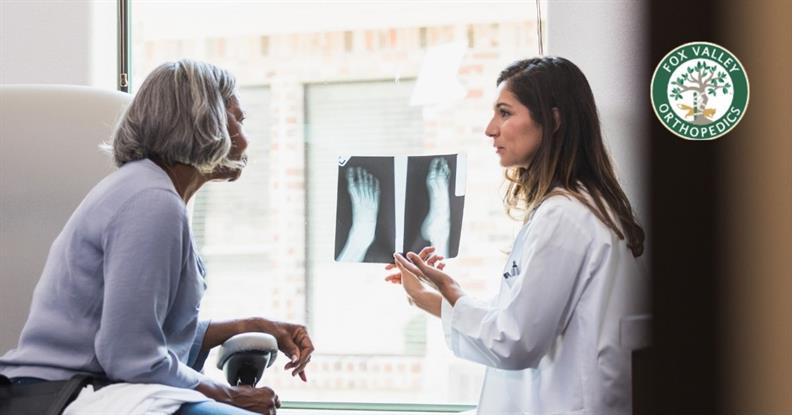Bone Up on How to Keep Your Bones and Joints Healthy…for Life
- Category: General
- Posted On:

Diseases of the bones and joints are the leading cause of disability and healthcare costs for Americans. The most common health condition in this country, more than thirty percent of the nation’s population requires medical care because of a musculoskeletal disease, which includes arthritis, back pain, osteoporosis, traumatic injuries, and childhood conditions.
The physicians at Fox Valley Orthopedics believe that prevention and education can go a very long way to slowing the rise of this startling epidemic.
“Our bodies tolerate sports and other rigorous activities very well if the muscles, joints, and tendons are properly conditioned,” says Dr. David R. Morawski, a Fox Valley Orthopedic surgeon specializing in joint surgery for older patients.
“Joint failure happens not only because of calcium and mineral loss, but also because of insufficient exercise, poor kidney function, dialysis, being overweight, prednisone treatments, hormone imbalances, asthma, rheumatoid arthritis, and even immunosuppressive medications,” says Dr. Morawski. “Be aware of what will put you at risk, and – if possible – avoid the risks.”
Stats & quick facts
How many Americans suffer from bone and joint disease?
- Twice the rate of reported heart or respiratory issues, nearly half the population over eighteen has a musculoskeletal condition…many of which began in childhood.
- Children represent ten percent of the population with disabling musculoskeletal conditions such as spinal deformities, congenital problems, and cancers of bone and connective tissue.
- One in two women and one in four men over the age of fifty will have an osteoporosis-related fracture in his or her remaining lifetime.
- Bone and joint conditions are the most common cause of severe, long-term pain and physical disability worldwide affecting hundreds of millions of people.
- Without intervention, the global prevalence of musculoskeletal conditions is predicted to dramatically increase.
Tips for preventing bone & joint disease
- Begin proper conditioning when athletes are young, and include cross-training.
- Alternate sports activities with non-impact ones such as swimming and cycling.
- Don’t focus on “power muscles” in training; incorporate specific exercises to strengthen smaller muscles.
- Stretch and warm-up before exercising or participating in sports.
- Maintain a proper weight, and eat well.
- Stay active as you age. Regular exercise slows the loss of muscle mass, strengthens bones, and reduces joint and muscle pain, all of which improve mobility and balance and reduces the risk of falling.
- You don’t need to exercise long and hard to benefit from physical activity. Thirty minutes of moderate physical activity such as a brisk walk, working in the yard, a bike ride, or even washing your car is extremely helpful.
- Physical activity for those with chronic medical conditions helps them feel better, not worse.
- Don’t fear pain or avoid exercise because you have swelling and stiffness of the bones, joints, or tendons. Some muscle soreness is normal when beginning an exercise regimen, but it will disappear as you regularly work out.
Osteoporosis prevention:
- Consume sufficient amounts of calcium and Vitamin D throughout life.
- Exercise regularly, with resistance and high-impact activities.
- Implement a healthy diet.
- Avoid smoking and consuming excessive amounts of alcohol; they increase bone loss.
Exercise tips for people with osteoporosis:
- Participate in weight-bearing exercises such as walking, hiking, stair climbing, dancing, racquet sports, and treadmill exercises.
- Engage in strength-training exercises using light weights.
Exercise tips for osteoarthritis sufferers:
- Engage in a balanced fitness program that includes walking, swimming, cycling, and stretching exercises.
- Avoid exercises that place excessive stress on the joints such as aerobic workouts, running, or competitive sports activities.
Exercise tips for people with low back pain:
- Perform daily stretching exercises.
- Engage in a more active exercise program once the initial pain subsides, one that includes walking, swimming, bicycling, and strength-training with light weights.
For more information, ask your orthopedic surgeon about prevention.



